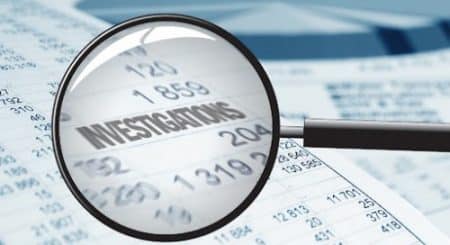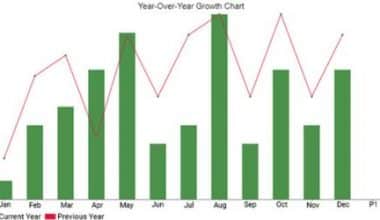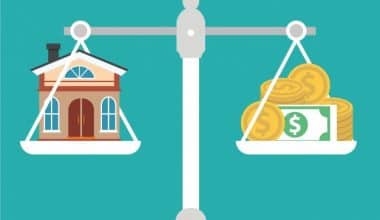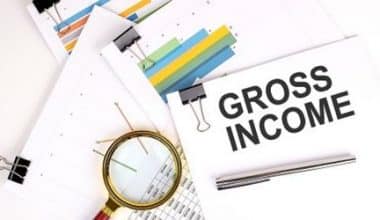There are numerous types of audits and audit reports that are used for a variety of purposes. Each of them is equally significant in the fields or sectors in which they are employed. So, in this post, we will learn about a forensic audit report, the procedure involved in carrying out an audit, and the cost of an audit.
What is a Forensic Audit?
A forensic audit is an examination of a company’s financial records to obtain information that can be used in court or a legal procedure.
Telemart, for example, engaged in a deal with RJ Inc for the delivery of carts on the advice of its Chief Financial Officer (CFO). RJ Inc was not authorized to conduct business at the time since its license had been suspended due to certain inconsistencies in taxes paid. Despite knowing this, the CFO nevertheless suggested that Telemart engage in a deal with RJ Inc because he was privately compensated by RJ for doing so.
Such instances of fraud can be revealed through a forensic audit.
What is the Purpose of a Forensic Audit?
Forensic audits are conducted for a variety of reasons, including the following:
#1. Corruption
An auditor would check for the following in a forensic audit while investigating fraud:
Conflicts of Interest
When a fraudster uses his or her influence to earn personal gain at the expense of the company. For example, if a manager authorizes and approves incorrect spending for an employee with whom he has a personal relationship. Even if the manager did not directly benefit monetarily from this approval, he is thought to be more likely to benefit personally after granting similar incorrect approvals.
Bribery
As the term implies, bribery is the act of offering money to get things done or influence a situation in one’s favor. Joyable, for example, bribed a Royal employee to supply particular data to assist Joyable in making a tender bid to Royals house.
Extortion
Extortion occurs when Technosmith demands money to give a contract to Telemith.
#2. Misappropriation of Assets
The most prevalent type of fraud is asset misappropriation. Misappropriation of funds, creation of phony invoices, payments given to non-existent suppliers or workers, misappropriation of assets, or theft of inventory is a few examples of such asset misappropriation.
#3. Falsification of financial statements
Companies commit this type of fraud to present the company’s financial performance as better than it is. So, the objective of presenting fake figures could be to boost liquidity, guarantee top management continues to receive bonuses, or deal with market performance pressure.
Financial statement fraud can manifest itself in a variety of ways, including the intentional forgery of accounting records, the omission of transactions – either revenue or expenses, the omission of relevant details from financial statements, or the failure to apply the required financial reporting standards.
Internal Audit vs. Forensic Audit
A formal study of an organization’s or individual’s accounts or financial position is classified as an audit. It is carried out by a public accounting company to provide “comfort” concerning an organization’s financial accounts. Members of the audit committee, board of directors, owners, managers, or other personnel in supervisory positions in many organizations have little (if any) experience with other types of audits, such as forensic or internal audits. If there is confusion about which way to go, they may end up looking for the wrong option.
Financial Audit vs. Forensic Audit
A forensic audit, also known as a forensic examination, is a search of financial records for evidence of illegal financial conduct. The phrase forensic is defined as belonging to, employed in, or appropriate for courts of justice or public discussion and debate. A financial audit, often known as a financial statement audit, is described as an independent auditor’s assessment of an entity’s financial statements and related documentation. So, the outcomes of this assessment include an auditor’s report attesting to the fairness of the financial statements and relevant disclosures.
Forensic Audit Inquiry Procedure
A forensic auditor must be specially trained in forensic audit procedures as well as the laws of accounting difficulties.
A forensic audit entails additional measures that must be completed in addition to standard audit methods. the procedure of a forensic audit can be seen below:
#1. Make an investigating plan.
When a client employs a forensic auditor, the auditor must understand the scope of the audit. For example, the client may be concerned about suspected deception about the quality of raw materials delivered. The forensic auditor will plan their inquiry to accomplish goals such as:
- Determine what type of fraud, if any, is being perpetrated.
- Determine the time frame in which the fraud happened.
- Learn how the fraud was concealed.
- Determine the fraud’s perpetrators.
- Calculate the loss caused by the scam.
- Collect pertinent evidence that will be admissible in court.
- Suggestions for future measures to prevent such frauds in the company
#2. Gather evidence
By the end of the audit, the forensic auditor should have a good understanding of the type of fraud that was committed and how it was done. The evidence gathered should be sufficient to establish the identity of the fraudster(s) in court, show the intricacies of the fraud scheme, and document the amount of financial loss sustained as well as the parties affected by the scam.
A logical flow of evidence will assist the court in comprehending the fraud and evidence presented. So, forensic auditors must take precautions to ensure that no one damages or alters the documents and other evidence collected.
The following are common methods for gathering evidence in a forensic audit:
- Substantive techniques include, for example, reconciliation, document review, and so on.
- Analytical procedures – Used to compare trends over time or to obtain comparative data from various segments.
- Computer-assisted audit techniques – Software programs that can be used to detect fraud on a computer.
- Understanding and testing internal controls to identify the flaws that permitted the fraud to occur.
#3. Question the suspect (s)
- Reporting – A report is required so that the fraud can be presented to a client. The report should include the investigation’s findings, a summary of the evidence, an explanation of how the fraud was committed, and recommendations for how internal controls may be improved to prevent such fraud in the future. The report must be submitted to a customer for them to file a legal case if they so wish.
- Court proceedings. During court proceedings, the forensic auditor must be present to explain the evidence collected and how the suspect was identified. They should simplify complex accounting issues and explain them in layman’s terms so that people who do not understand accounting terms can understand the fraud that was committed.
Cost of a Forensic Audit
The cost of a forensic audit might vary depending on several factors.
- Is the embezzlement over a long period of time?
- Is there more than one company or bank account involved?
- Have any or all of the original documents been destroyed?
- How was the deception concealed?
These factors influence the length of time required to investigate fraud and embezzlement.
How To Estimate Cost
The length of the embezzlement and the quality of the source documents have a significant impact on the time required to investigate the occurrence. Because of these unknowns, most forensic auditors will not provide a fixed cost upfront. Most, though, will quote the typical billing rate. A client can estimate the expenses by estimating the hours using an average billing rate.
Hours
The first step in determining the hours is to calculate how long the deception will last. Assume, for example, that the embezzlement affects only one set of books and one year. On average, the time it takes from the start of the investigation to the final issue will be between 50 and 70 hours. If more than one year is involved, the additional years will take around 30 – 40 hours per additional year. So, for two-year embezzlement on one set of books, the projected hours will be between 80 and 110. Using this information as the starting point, a customer can multiply by the number of years the fraud was thought to have happened.
Testimony
If there is a need for testimony, there will be an additional cost for the forensic audit. Many law firms will charge a fee for testimony. This is because of the level of expertise required to sit in a courtroom. Most testimonies will last 8 to 12 hours. This covers preparation time, deposition time, and actual testimony. Again, a larger scam may necessitate more preparatory time.
The hours will be determined by:
- The length of the fraud
- The number of financial books that have been impacted
- It is now time for testimony.
This computation provides a client with an idea of the cost of the forensic audit procedure. While this method is not always 100% accurate, it does provide some insight into the entire cost of a forensic audit investigation.
Summary
To summarize, a forensic audit is a detailed engagement that necessitates expertise in not only accounting and auditing procedures, but also legal framework knowledge. A forensic auditor must comprehend the numerous types of frauds that can be committed as well as how evidence must be gathered. Also, the cost of a forensic audit depends on the length of time the investigation will take, the number of testifiers needed, and several other factors
Forensic Audit Frequently Asked Questions
What is the scope of the forensic audit?
The scope of forensic accounting services used to be restricted to financial anomalies, but it now includes a wide range of services that a conventional auditor does not provide. Forensic accountants may provide their skills in the quantification of damages caused by crime as well as in connection with suitable proceedings.
Who can perform a forensic audit?
The majority of forensic audits and examinations are performed by Certified Fraud Examiners (CFEs) or forensic accountants who are often considered experts in a certain discipline of forensic accounting. Internal audits are frequently performed by Certified Internal Auditors (CIAs) or other accounting experts.
What is the difference between forensic audit and forensic accounting?
The key distinction between forensic audits and accounting audits is the audit’s aim. Forensic accounting is related to Business fraud. Forensic audits are closely related to financial statement frauds, whereas forensic accounting necessitates the use of investigation techniques and technology.






